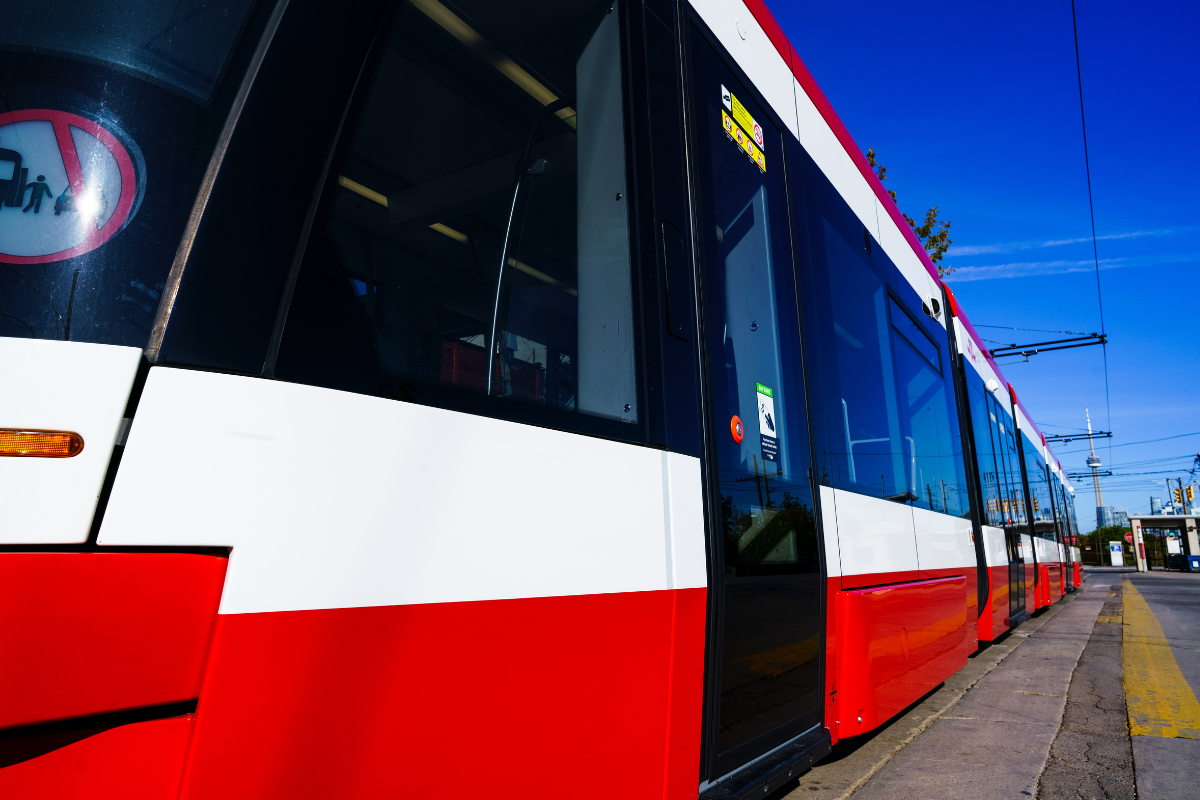The 6 Best Transit Apps For TTC Riders
By Athanasia Nikolakakis | Published on 07 Sep 2023

Users the Toronto’s public transit system, know the value of a third-party app that can help you navigate the system. Most transit apps allow you to check local bus or subway arrival times and plan routes within the city. Although the Toronto Transit Commission (TTC) admittedly provides these services too, their options are much clunkier. You can only check the time that a bus arrives by texting a particular code to 898882 (TXTTTC) and must use its website to plan routes. Third-party apps make both processes significantly smoother.
Of course, not all apps are created equally. Many have specific features that are well suited to particular commute styles. As a result, we highly recommend that you download the app that best aligns with your TTC usage.
Citymapper: the best TTC app for travellers

Citymapper allows users to navigate across a wide variety of cities, including Toronto, Montreal, Vancouver, New York City, and Boston. This makes it ideal for those who travel — after all, it is less intimidating to use a program that you are already familiar with.
That being said, Citymapper does not specialize in TTC routes. When users request a route, they are shown a variety of transportation options, including public transit, rideshare services, walking, driving, and more. Similarly, although the app provides a variety of public transit routes, some may involve non-TTC transit options. For example, when I asked the app to take me from Keele and Lawrence to the Canadian National Exhibition (CNE) grounds (or, more specifically, the Exhibition press building), one of the recommended routes suggested that I take the UP Express for part of the journey. If I was not already aware that UP and TTC were separate transit entities (with separate entry fees), this could have led to an unpleasant financial surprise.
Citymapper currently has a 4.8 star rating on Google Play. Similarly, it has a 4.9 star rating on the App Store.
Transit: the best TTC app for cyclist

The Transit app makes it easy to check vehicle arrival times and plan trip routes. It also includes a map of Bike Share locations and allows users to select whether or not they would like Bike Share routes (or private bike usage) to be factored into transit route calculations.
When I entered the same sample trip as above (Keele and Lawrence to the CNE) into Transit, I was provided with nearly the same routes. However, the route timeframes slightly differed. Additionally, Transit did not differentiate between how long it would take to ride the standard 29 Dufferin bus versus the Express 929 bus, making its timeframe estimates less accurate. Still, its routes were reasonable — just be sure to give yourself a buffer when calculating your estimated arrival time.
Transit currently has a 4.5 star rating on Google Play and the App Store.
Triplinx: the best TTC app for GTHA residents

Triplinx covers transit options across the Greater Toronto and Hamilton Area (GTHA), making it ideal for commuters who live outside of the TTC’s range. However, the app’s biggest perk is the amount of route customization options offered. When requesting a route, users can set their preferred transit services, connection options (e.g. car, bike, or just transit), and walking speed. This can be extremely helpful for those who wish to avoid relatively expensive transit providers. Users with mobility concerns can also request accessible routes.
When I entered the same sample trip into Triplinx, I received extremely similar routes — and the fastest estimated time so far (by one minute). I did not specify that I only wanted to take the TTC, so I was offered a couple of routes that involved GO Transit and the UP Express. Triplinx also displayed each route’s total adult Presto fare. Note that the TTC charges adult Presto cards and credit cards the same amount of money per ride, so it is slightly more cost-effective to pay your TTC fare via credit card and earn rewards.
Triplinx currently has a 4 star rating on Google Play. The app also has a 4.6 star rating on the App Store.
TTC Watch: the best TTC app for monitoring alerts

Unlike the other options on this list, TTC Watch does not allow its users to plan transit routes. Still, many will find that the app is worth a download since its ‘Alerts’ tab makes it easy to scroll through major TTC updates. Notably, the tab only includes what the TTC calls “Live Service Delays,” which are unanticipated disruptions. Planned closures will not appear. Ultimately though, seeing as most transit apps do not have any way to scroll through current service disruptions, TTC Watch can be a helpful supplement.
TTC Watch currently has a 4.5 star rating on the App Store. It is not available on Google Play.
Google Maps: the best TTC app for occasional riders

When it comes to transit navigation, Google Maps admittedly is not the most elegant application on this list. Users have to zoom in extremely close before they can open a particular stop’s estimated vehicle times. Additionally, when you click on a recommended route, the estimated vehicle arrival times sometimes ignore the first vehicle that will arrive and only display later information. Still, Google Maps has one major perk: it is a staple on many peoples’ phones. Those who take the TTC infrequently do not need to download a dedicated transit app — Google Maps is fine for occasional use.
That being said, it is important to note that Google Maps routes are not always the fastest. When I asked Google Maps to calculate a route from Keele and Lawrence to the CNE, one recommended route would take 73 minutes (all of the other apps’ routes took 50-64 minutes). If speed is a top priority, TTC riders may wish to find their transit routes elsewhere.
Google Maps currently has a 4 star rating on Google Play. It also has a 4.7 star rating on the App Store.
Toronto Subway Map: the best TTC app for those with a poor signal

Toronto Subway Map is the only program on this list that is able to generate route recommendations offline. This makes it useful for those who cannot reliably access cellular service in the subway.
Unfortunately, though, Toronto Subway Map has several major limitations. The app does not provide estimates for when vehicles will arrive, which means that trip duration estimates are not as accurate as those generated by other programs. Toronto Subway Map also only includes TTC and GO subways, plus a couple of special routes (such as the TTC’s Airport Express 900 bus) — it does not map standard TTC busses or streetcars. Plus, the app only provides users with the single fastest route available. When I asked how to get from Dundas West to Union station, Toronto Subway Map told me to take the UP Express without mentioning the TTC at all.
Ultimately, this app is not powerful enough to meet most users’ daily transit route needs. However, it makes it easy to find the fastest route to a particular subway stop. Those who frequently find themselves pushing through crowded subway carts to view the TTC map on board will get a lot of use out of Toronto Subway Map, but other users may not.
Toronto Subway Map currently has a 4.2 star rating on the App Store. It is also available on Google Play, but does not yet have enough reviews for a star rating.
Frequently Asked Questions About TTC Apps
If you still have any questions about TTC apps, check out our list of frequently asked questions below.
